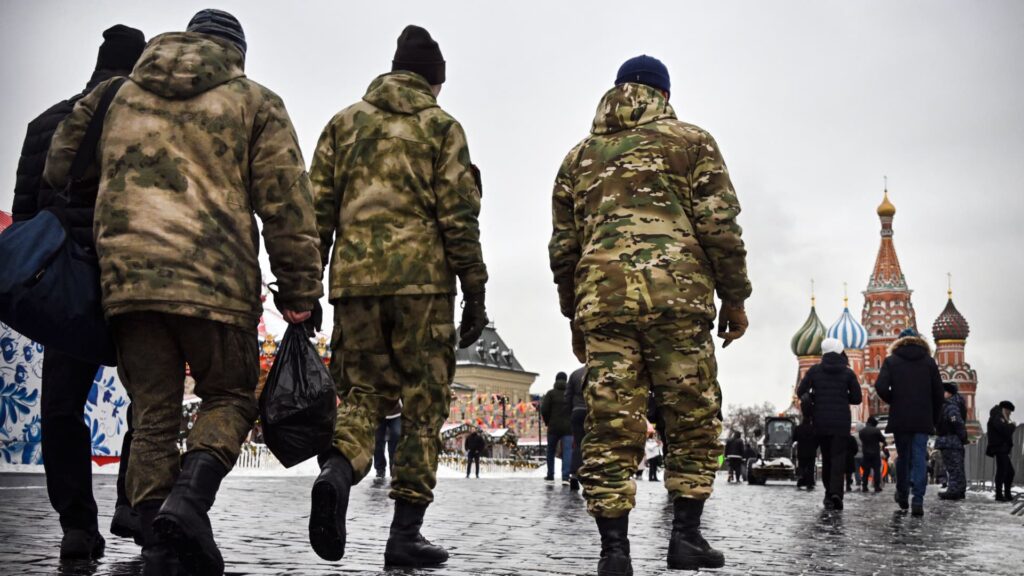Men wearing military uniform walk along Red Square in front of St. Basil’s Cathedral in central Moscow on February 13, 2023.
Alexander Nemenov | Afp | Getty Images
The coming months will be critical in figuring out how Russia’s economy is holding up in the face of a new suite of sanctions, and for how long it can continue pouring money into its military assault on Ukraine.
Russia’s budget deficit hit a record 1.8 trillion Russian rubles ($24.4 million) in January, with spending growing by 58% from the previous year while revenues fell by more than a third.
Industrial production and retail sales in December fell to their worst year-on-year contractions since the onset of the Covid-19 pandemic in early 2020, with retail sales dropping by 10.5% year-on-year while industrial production shrank by 4.3%, compared to a 1.8% contraction in November.
Russia has yet to report its GDP growth figures for December, which are expected to be incorporated into full-year 2022 data slated for this Friday.
According to the World Bank, the International Monetary Fund and the OECD, Russian GDP dropped by at least 2.2% in a best-case scenario in 2022 and by up to 3.9%, and is widely expected to contract again in 2023.
However, both the Russian finance ministry and the central bank maintain that all of this is within their models.
Several unique circumstances and accounting technicalities go some way to explaining the scale of the January deficit figure, according to Chris Weafer, CEO of Moscow-based Macro Advisory.
The big drop in tax revenue was mostly accounted for by changes in the tax regime that kicked in at the beginning of January, the finance ministry claimed. Companies previously paid taxes twice per month, but now make one consolidated payment on the 28th of each month.
The finance ministry suggested most of the January tax payments had not yet been accounted for by Jan. 31 and will instead feed into the February and March figures.
Weafer also highlighted a change in the…
Read the full article here





